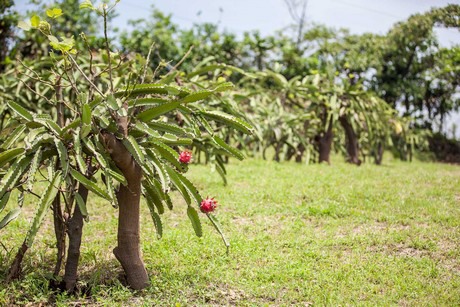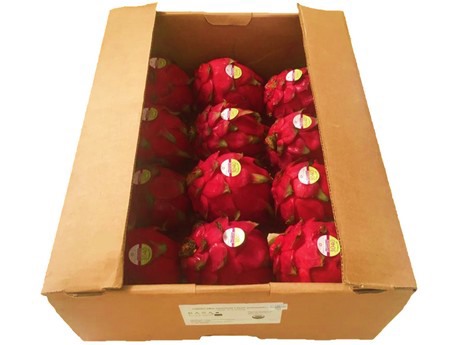The season for pitayas has been really good for Nicaraguan growers. They're looking at their biggest production to date. For one particular exporter though, it’s not just about growing and selling the fruit. They’ve been pioneering a sustainable way of farming pitayas without damaging the soil.

The pitaya (pitahaya/dragonfruit) season in Nicaragua has been a satisfying one so far. The fruit has about 4 to 5 cycles of blooming and harvesting every year, but the most consistent quality can be found between June and October.
During this past period, the production was higher than it's ever been, says Will Burke of Sol Organica: “We’re seeing the biggest production to date this year. We’ve gained a lot of knowledge through consultants and now have a better way of cultivating the soil we grow on. Usually after using soil for crops, it needs time to heal in order to provide good volumes of any fruit. Thanks to our improvements in terms of farm management, we expect to be able to produce larger quantities of the pitaya than ever before.”

The pitaya is a very popular fruit in Asia, but is up and coming in other markets as well. “It’s a misconception that pitayas are originally from the Asian regions. Pitayas are actually native to Central America. The magenta pulp is of the brightest color in Nicaragua. In Asia the fruit has been subject to a lot of crossbreeding, where the pitayas from our region still contain the original pigmentation,” Burke explains. “Raising the popularity of the fruit is one of the missions in front of us and we feel Instagram plays a huge role in this. The pitaya, thanks to its unique and bright coloring, is the perfect fruit for pictures posted on Instagram. There are entire hashtags dedicated to having the pitaya displayed as beautifully as possible, like #pitayabowl. Social media was really the boost that this fruit needed in the Western markets.”

One of the big missions for Sol Organica is the social and environmental engagement they’re partnering on with the smallholder farmers they work with. “It sounds a bit cliché maybe, but we’re literally trying to save our planet by encouraging small farmers to use regenerative methods for cultivating the pitaya fruits. This means we can say we’re the biggest fully organic producers of pitayas.
It all comes down to soil management and water management. And although these farmers may be small on their own, if you consider we work with 950 farmers that cultivate about three quarters of a hectare a piece, it all adds up to the total harvest. We’ve been doing so well that Sol Organica and our growers were selected to receive the first regenerative organic certification audit in the world for the methods we’ve been using. Regenerative practices draw down carbon from the atmosphere, while improving soil health.”

Sol Organica also processes pitaya into IQF frozen cubes, frozen purees and powders. “It’s a perfect ingredient for smoothies, juices, yogurt, frozen desserts and even baby food! We also provide fresh pitaya, which can be eaten in a number of ways; try it raw in fruit or savory salads, use it as a garnish, pair it with seafood dishes, or blend it into delicious juices and smoothies.” Burke concludes.
For more information:
Liz Brittle
Sol Organica, S.A.
Tel: +1(512)333-1473
Email: lbrittle@solorganica.com
www.solorganica.com
